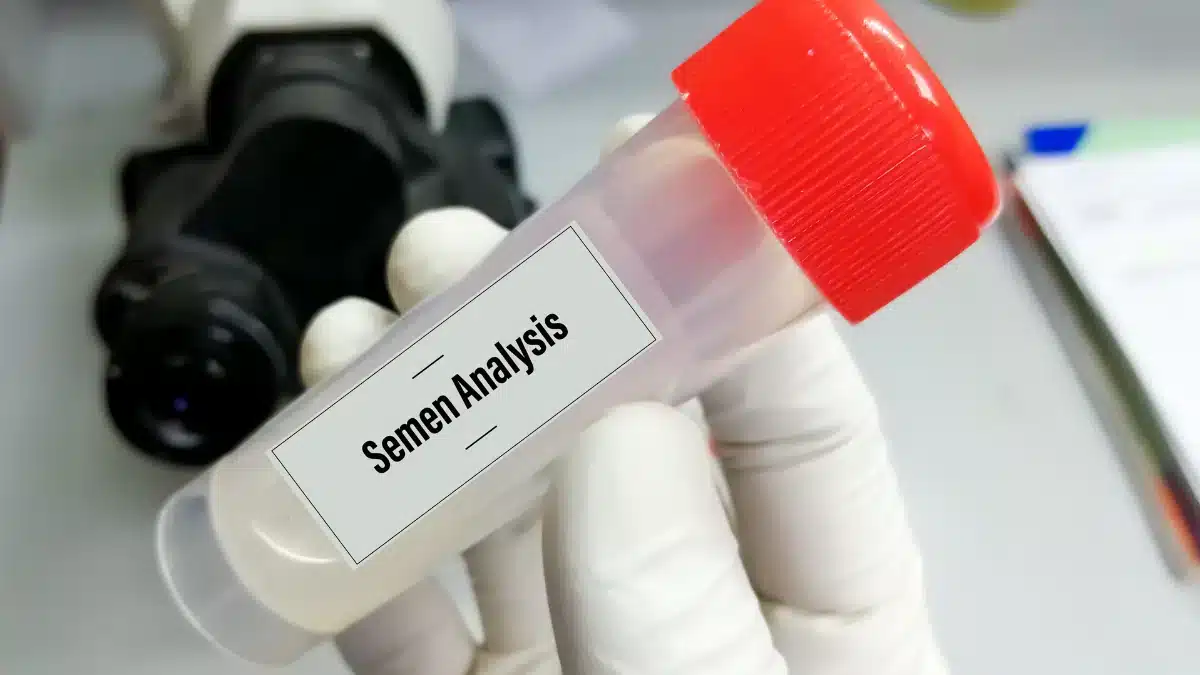Understanding Semen Color: What Your Body May Be Telling You
Semen color is an aspect often overlooked in discussions about reproductive health, yet it can provide valuable insights into an individual’s well-being.
It typically ranges from translucent white to light gray or yellowish. However, deviations from this norm may indicate underlying issues.
While variations in semen color are typically harmless, understanding the potential implications can be crucial for overall health awareness.
In this article, we’ll explore the spectrum of semen colors, delve into potential symptoms, examine the causes behind these variations, and on when to seek professional advice.
What do semen color and consistency indicate
Semen commonly varies in color, usually appearing in shades of white to light gray. However, it’s not uncommon for it to deviate from this typical range.
Changes in color may be subtle, like a yellowish tint, or more noticeable, such as brown or red hues.
Understanding these variations requires attention to accompanying symptoms.
Yellow or greenish tinge
A yellow or greenish tint could be indicative of infections.
Yellow semen can also result from Leukocytospermia, involving an excess of white blood cells, or Jaundice, caused by elevated bilirubin levels.
Sexually Transmitted Infections (STIs) like Gonorrhea can cause changes in semen color.
In such cases, seeking medical attention is crucial for diagnosis and treatment.
Red or pink color
Red or pink semen, known as Hematospermia, might be alarming, suggesting the presence of blood.
While small amounts of blood might not be serious, persistent redness requires medical evaluation.
Potential causes range from infections to more severe conditions like prostate issues.
Male Ejaculation: Exploring Benefits and Common Concerns‘Â This insightful read addresses questions, benefits, and common concerns surrounding this aspect of male reproductive health, providing a well-rounded understanding
Brown or dark brown
Darker shades, resembling coffee grounds, may point to older blood.
This could be a result of trauma, vigorous sexual activity, or an underlying condition affecting the prostate or seminal vesicles.
Again, consulting a healthcare professional is vital for a proper diagnosis.
Transparent or watery
A more transparent or watery consistency may be linked to frequent ejaculation, which can dilute the semen.
However, persistent watery semen might signal issues with the prostate or seminal vesicles.
Thick or clumpy
Semen consistency can vary, and changes may occur due to factors like hydration, frequency of ejaculation, or overall health.
If the consistency remains consistently clumpy, it’s advisable to consult a healthcare provider.
Causes of semen color variations

Understanding the reasons behind semen color changes involves considering various factors:
- Diet and lifestyle: Consuming foods with pigments like beta-carotene can influence semen color. Additionally, lifestyle factors such as smoking or excessive alcohol intake may contribute to variations
- Medications: Certain medications or supplements can impact semen color. For instance, high doses of antibiotics containing rifampin may lead to yellowish hues
- Infections: Sexually Transmitted Infections (STIs) or other infections affecting the reproductive system can cause abnormal semen color. Seeking prompt medical attention is crucial to diagnose and treat these conditions
- Prostate issues: Prostate-related conditions, such as Prostatitis or an enlarged prostate, may contribute to changes in semen color. Regular prostate check-ups are essential for men’s health
- Blood vessel issues: Ruptured blood vessels in the reproductive system can lead to blood mixing with semen, resulting in red or brown discoloration
- Cancer: While rare, certain cancers, including testicular or prostate cancer, may manifest through changes in semen color. Regular screenings and consultations with healthcare professionals are vital for early detection
Conclusion
Understanding semen color is a key aspect of reproductive health often overlooked.
While it typically ranges from white to light gray, variations like yellow, red, or brown may signal underlying issues.
For instance, a yellowish tint indicates potential infections, red or pink may imply blood presence, and darker shades could suggest older blood.
Transparent or watery consistency may link to frequent ejaculation, while persistent clumpiness warrants professional consultation.
Factors like diet, medications, infections, prostate issues, blood vessel problems, and, rarely, cancer contribute to these variations.
Regular awareness and timely medical attention ensure comprehensive reproductive health.
Frequently Asked Questions
What does it mean if semen is red or pink?
Red or pink semen, known as Hematospermia, may signal blood presence, indicating potential issues like infections, prostate problems, or injury. Seeking prompt medical attention is crucial for accurate diagnosis and appropriate intervention.
Can diet affect semen color?
Certainly, diet influences semen color. Dehydration or specific foods can alter it. A balanced diet and adequate hydration positively impact reproductive health, emphasizing the importance of mindful dietary choices.
When should I seek professional guidance for semen color changes?
Persistent or significant changes in semen color should prompt a consultation with a healthcare professional. Early intervention and accurate diagnosis are crucial for addressing potential health issues.
How can I maintain reproductive health?
Regular health check-ups, adopting a healthy lifestyle, and seeking prompt medical attention for concerns contribute to maintaining reproductive health. Lifestyle choices, including a balanced diet and exercise, play a pivotal role.
WowRx uses only high-quality sources while writing our articles. Please read our content information policy to know more about how we keep our content reliable and trustworthy.






